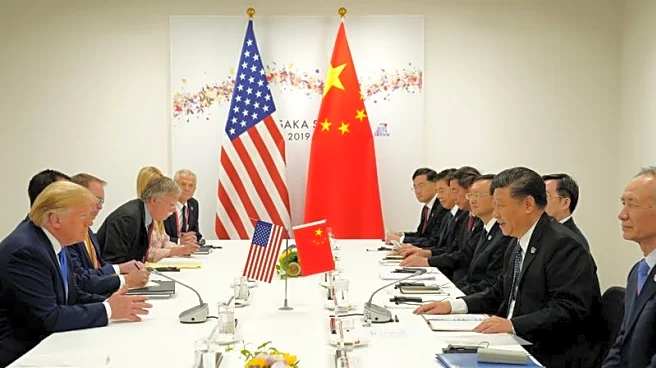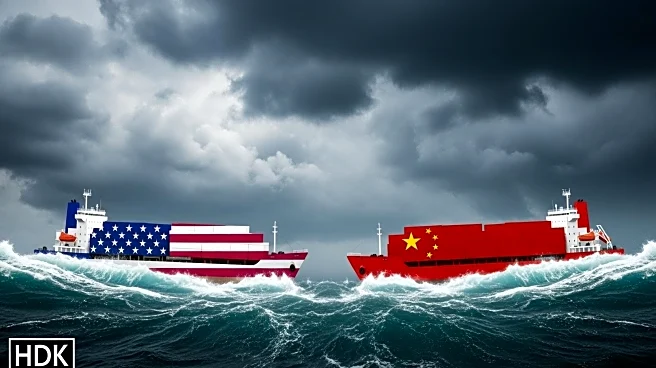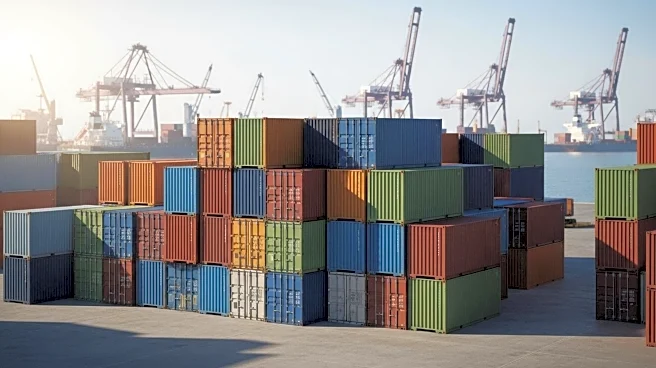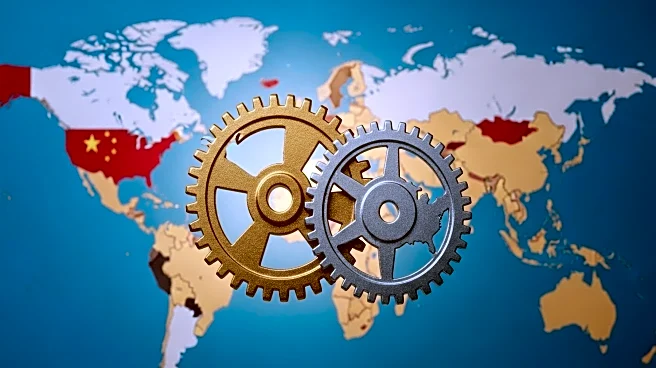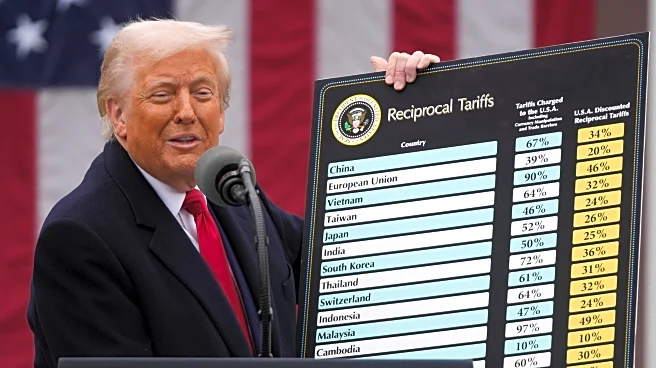What's Happening?
The United States has initiated new port fees on Chinese ships, marking a significant escalation in trade tensions between the two countries. This move is part of a broader strategy to support American shipping companies, according to Washington. In response, China has announced levies on US-owned, operated, built, or flagged vessels, excluding Chinese-built ships. These measures are seen as a retaliation against what China perceives as discriminatory actions by the US. Additionally, new US tariffs have been imposed on imported timber, kitchen cabinets, and upholstered furniture, much of which originates from China. Despite these developments, US Treasury Secretary Scott Bessent has indicated that President Trump and China's President Xi Jinping are expected to meet in South Korea later this month to discuss de-escalation efforts.
Why It's Important?
The imposition of port fees and tariffs signifies a deepening of trade tensions between the US and China, two of the world's largest economies. These actions could have significant implications for global trade, potentially disrupting supply chains and increasing costs for businesses reliant on imports and exports between the two nations. The shipping industry, in particular, faces substantial financial burdens due to the new fees, which could lead to increased prices for consumers. The ongoing trade conflict also poses risks to economic stability, as retaliatory measures could further strain relations and impact market confidence.
What's Next?
As the situation unfolds, both countries are expected to continue negotiations to prevent further escalation. The anticipated meeting between President Trump and President Xi Jinping in South Korea could be a pivotal moment in addressing these trade tensions. Stakeholders in the shipping and manufacturing industries will be closely monitoring these discussions, hoping for resolutions that could alleviate the financial pressures caused by the new tariffs and fees. Additionally, the international community will be watching for any signs of compromise or further retaliatory actions that could impact global economic dynamics.
Beyond the Headlines
The trade tensions between the US and China highlight broader issues of economic nationalism and protectionism. These developments may encourage other countries to reassess their trade policies and consider similar protective measures. The situation also underscores the complexities of international trade agreements and the challenges in balancing national interests with global economic cooperation. Long-term shifts in trade patterns could emerge as businesses seek to mitigate risks by diversifying their supply chains away from heavily tariffed regions.


